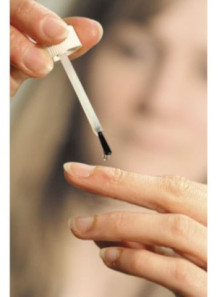Iso-octyl Cyanoacrylate
Cosmetics
Code: 127668
Adhesives used in medical applications due to its low toxicity.
Iso-octyl Cyanoacrylate
Adhesives used in medical applications due to its low toxicity.
2-octyl Cyanoacrylate is a medical adhesive used because of its low toxicity.
this item Sold as a cosmetic grade/external use. Not sold as medical grade.
if need medical grade please contact customer relations (minimum sale 1kg only)
| Iso-Octyl Cyanoacrylate (IOCA) | 2-Octyl Cyanoacrylate (OCA) | |
|---|---|---|
| Alkyl chain geometry | 4-methyl-heptyl ester (branch in the middle of the C-8 chain) → highly branched, more steric bulk | 2-octyl ester (single methyl branch on C-2, remainder linear) → semi-branched |
| Viscosity (25 °C, neat monomer) | typically 450 – 550 cP (slightly higher because of the extra branching) | typically 300 – 400 cP (Dermabond ≈ 350 cP) |
| Polymer film characteristics | • Very soft/flexible film; high elongation before break• Reported higher breaking strength than n-butyl analogues, but peer-reviewed head-to-head data vs OCA are still scarce | • Well-studied; 3–4 × stronger volumetric bond than n-butyl CA; balanced toughness & flexibility; clinically proven to remain intact ≥ 7 days on skin |
| Polymerisation rate / exotherm | Slightly slower set and ~1 – 2 °C lower peak exotherm (bulkier side chain dampens anionic chain-growth) – useful on sensitive tissue | Sets in ≈ 60 s; peak exotherm typically 45-55 °C when applied as a thin film |
| Biocompatibility & degradation | Long, branched chain slows hydrolytic scission → even lower formaldehyde release than OCA; in vitro cytotoxicity reported comparable to OCA | Accepted “gold-standard” medical CA since FDA clearance 1998; low tissue reaction relative to shorter (butyl/ethyl) CAs |
| Regulatory & market status | Sold mainly as raw material or in a few newer tissue-sealant lines (e.g. Myokling Octa) that claim US FDA-approved molecule but have limited published clinical trials | Broad commercial availability (Dermabond®, SurgiSeal®, LiquiBand Exceed, etc.); hundreds of clinical papers & device clearances |
| Mechanism | - |
| Appearance | - |
| Longevity | - |
| Strength | - |
| Storage | - |
| Shelf Life | - |
| Allergen(s) | - |
| Dosage (Range) | - |
| Recommended Dosage | - |
| Dosage (Per Day) | - |
| Recommended Dosage (Per Day) | - |
| Mix Method | - |
| Heat Resistance | - |
| Stable in pH range | - |
| Solubility | - |
| Product Types | - |
| INCI | - |
Purchase History for
Loading purchase history...
Cart
No products
Subtotal:
฿0.00
Total
฿0.00
THB



